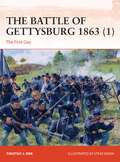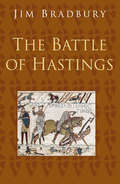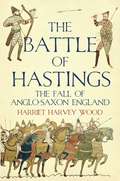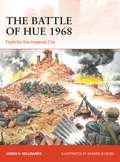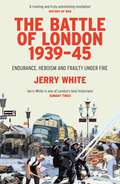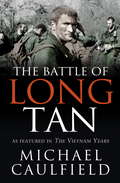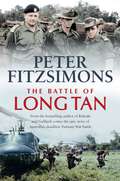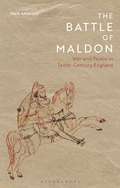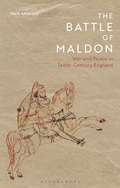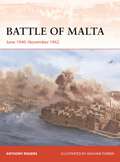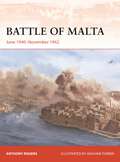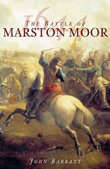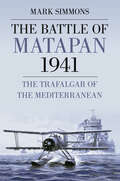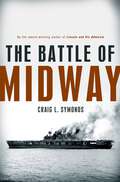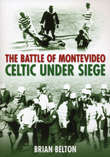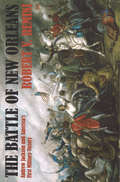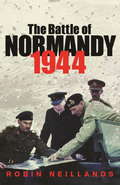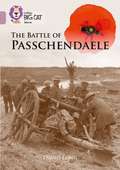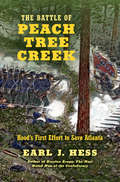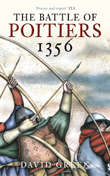- Table View
- List View
The Battle of Gettysburg 1863: The Third Day (Campaign #403)
by Timothy OrrAn authoritative and superbly illustrated exploration of the events of July 3, 1863, incorporating new interpretations that have arisen in the past two decades.The third day of the Battle of Gettysburg was the most dramatic of the three. Among the iconic clashes that took place was the 12,500-man attack known as Pickett's Charge, General Lee's last assault at Gettysburg in which his soldiers suffered over 60 percent losses. Other key moments of the day were the action at Culp's Hill-arguably where the outcome of the battle was decided-the engagement at East Cavalry Field, the two-hour artillery duel, and the Union counterattack at the south end of the battlefield.This final volume in Timothy J. Orr's trilogy emphasizes the tactical decisions of Day Three and documents the ensuing combat in detailed 2D maps, 3D diagrams, and historic photographs. It also includes a brief summary of the strategic and human consequences of the campaign, carrying the story to November 19, 1863, the day of Lincoln's famed Gettysburg Address. Primary accounts from common soldiers infuse this study, reminding readers that Gettysburg was-among other things-a tale of suffering and endurance. The experiences and equipment of these men are brought to life in stunning detail in Steve Noon's dramatic battlescenes.
The Battle of Gettysburg 1863: The Third Day (Campaign #403)
by Timothy OrrAn authoritative and superbly illustrated exploration of the events of July 3, 1863, incorporating new interpretations that have arisen in the past two decades.The third day of the Battle of Gettysburg was the most dramatic of the three. Among the iconic clashes that took place was the 12,500-man attack known as Pickett's Charge, General Lee's last assault at Gettysburg in which his soldiers suffered over 60 percent losses. Other key moments of the day were the action at Culp's Hill-arguably where the outcome of the battle was decided-the engagement at East Cavalry Field, the two-hour artillery duel, and the Union counterattack at the south end of the battlefield.This final volume in Timothy J. Orr's trilogy emphasizes the tactical decisions of Day Three and documents the ensuing combat in detailed 2D maps, 3D diagrams, and historic photographs. It also includes a brief summary of the strategic and human consequences of the campaign, carrying the story to November 19, 1863, the day of Lincoln's famed Gettysburg Address. Primary accounts from common soldiers infuse this study, reminding readers that Gettysburg was-among other things-a tale of suffering and endurance. The experiences and equipment of these men are brought to life in stunning detail in Steve Noon's dramatic battlescenes.
The Battle of Gettysburg 1863: The First Day (Campaign)
by Timothy J. OrrThis first volume of three discusses the tactical decisions made on day one and the ensuing combat, while also including a brief summary of the grand strategy in the Eastern Theater of the war, the conduct of the Pennsylvania Campaign from June 6 to 30, 1863, and the plight of civilians caught up in the conflict.The Battle of Gettysburg, which took place July 1–3, 1863 in and around the town of Gettysburg, PA resulted in the largest number of casualties of the entire American Civil War and is seen as the key turning point in the conflict. On its first day, Confederate General Robert E. Lee's Army of Northern Virginia sought to destroy the Union army, forcing its men to retreat through the streets of the Pennsylvania town to the hills just to the south. This volume, the first of three to cover the battle in depth, includes the morning cavalry skirmish, the morning clash at the Herbst's Woodlot and at the railroad cut, the afternoon clash at Oak Ridge, the afternoon fight at the Edward McPherson farm, the afternoon rout of the 11th Corps, the last stand of the 1st Corps at Seminary Ridge, the Union retreat through town, and the positions of the armies at nightfall.
The Battle of Hastings (Military History Ser.)
by Jim BradburyThe Battle of Hastings is probably the best-known and perhaps the most significant battle in English history. Its effects were deeply felt at the time, causing a lasting shift in cultural identity and national pride. Jim Bradbury here explores the full military background to the battle and investigates both the sources for our knowledge of what actually happened in 1066 and the role that the battle plays in national myth. The Battle of Hastings starts by looking at the Normans - who they were, where they came from - and the career of William before 1066. Next, Jim Bradbury turns to the Saxons in England, and to Harold Godwineson, successor to Edward the Confessor, and his attempts to create unity in the divided kingdom. This provides the background to an examination of the military development of the two sides up to 1066, detailing differences in tactics, arms and armour. The core of the book is a move-by-move reconstruction of the battle, including the advance planning, the site, the composition of the two armies and the use of archers, feigned flights and the death of Harold. This is a book that anyone interested in England's most famous battle will find indispensable.
The Battle of Hastings: The Fall of Anglo-Saxon England
by Harriet Harvey WoodHarriet Harvey Wood's original and fascinating book shows that, rather than bringing culture and enlightenment to England, the Normans' aggressive and illegal invasion destroyed a long-established and highly-developed civilization which was far ahead of other European peoples in its political institutions, art and literature. It explores the background and lead-up to the invasion and the motives of the leading players, the state of warfare in England and Normandy in 1066, and the battle itself.By all the laws of probability, King Harold ought to have won the battle of Hastings without difficulty and to have enjoyed a peaceful and enlightened reign. That he did not was largely a matter of sheer bad luck. The result could just as easily have gone the other way. This gripping and highly-readable book shows how he came to be defeated, and what England lost as a result of his defeat and death.
The Battle of Hue 1968: Fight for the Imperial City (Campaign)
by James H WillbanksIn late January 1968, some 84,000 North Vietnamese and Viet Cong troops launched a country-wide general offensive in South Vietnam, mounting simultaneous assaults on 36 of 44 provincial capitals, and five of the six autonomous cities (including the capital city of Saigon). The longest and bloodiest battle occurred in Hue, the most venerated place in Vietnam. The bitter fighting that raged there for more than three weeks drew the attention of the world.Hue was the ancient capital of Vietnam, and as such, had been previously avoided by both sides; it had not seen any serious fighting prior to 1968. All that changed on the night of January 31 that year when four North Vietnamese battalions and supporting Viet Cong units simultaneously attacked and occupied both parts of the city straddling the Perfume River. The Communist forces dug in and prepared to defend their hold on the city. US Marines and South Vietnamese soldiers were ordered to clear the city, supported by US Army artillery and troops. A brutal urban battle ensued as combat raged from house to house and door to door. It was a bloody fight and resulted in large-scale destruction of Hue. Eventually, the Marines and the South Vietnamese forces retook Hue, but it turned out to be one of the longest and bloodiest battles of the Tet Offensive, and led to a sea change in US policy in Vietnam.
The Battle of Hue 1968: Fight for the Imperial City (Campaign)
by James H WillbanksIn late January 1968, some 84,000 North Vietnamese and Viet Cong troops launched a country-wide general offensive in South Vietnam, mounting simultaneous assaults on 36 of 44 provincial capitals, and five of the six autonomous cities (including the capital city of Saigon). The longest and bloodiest battle occurred in Hue, the most venerated place in Vietnam. The bitter fighting that raged there for more than three weeks drew the attention of the world.Hue was the ancient capital of Vietnam, and as such, had been previously avoided by both sides; it had not seen any serious fighting prior to 1968. All that changed on the night of January 31 that year when four North Vietnamese battalions and supporting Viet Cong units simultaneously attacked and occupied both parts of the city straddling the Perfume River. The Communist forces dug in and prepared to defend their hold on the city. US Marines and South Vietnamese soldiers were ordered to clear the city, supported by US Army artillery and troops. A brutal urban battle ensued as combat raged from house to house and door to door. It was a bloody fight and resulted in large-scale destruction of Hue. Eventually, the Marines and the South Vietnamese forces retook Hue, but it turned out to be one of the longest and bloodiest battles of the Tet Offensive, and led to a sea change in US policy in Vietnam.
The Battle of Kursk: Hitler’s last gamble in the East (Under Fire)
by Georgia BallIn 1943, the fate of the Eastern Front hung in the balance. After a crushing defeat at Stalingrad, the German Army, desperate to regain the initiative, planned a huge offensive near the city of Kursk, 280 miles south-west of Moscow. Armed with the new Panther and Tiger tanks, Hitler and Field Marshal Erich von Manstein hoped to cut off and destroy Soviet forces in the Kursk salient using a pincer attack. But the Soviets knew they were coming, and they were ready. The elite SS Panzer divisions were flung headlong into a well-prepared Soviet defence, and a bitter battle ensued. This graphic novel brings that battle vividly to life through the eyes of the men who were there, combining historical authenticity with stunning illustrations to tell the full story of the last great German offensive on the Eastern Front.
The Battle of London 1939-45: Endurance, Heroism and Frailty Under Fire
by Jerry WhiteThe definitive social history of London in the Blitz, which transformed life in the capital beyond recognition.For Londoners the six long years of the Second World War were a time of almost constant anxiety, disruption, deprivation and sacrifice. The Blitz began in earnest in September 1940 and from then on, for prolonged periods, London was under sustained aerial bombardment by night and by day. Throughout the war, the capital was the nation's front line; by its end, 30,000 Londoners had lost their lives.Yet if the bombing defined the era for those who lived through it, the months of terror were outnumbered by those spent knitting together the fabric of daily life at work, in the home, on the allotment, in the cinema or theatre and, not least, standing in those interminable queues for daily necessities that were such a feature of London's war. Much has been written about 'the Myth of the Blitz' but in this riveting social history, Jerry White has unearthed what actually happened during those tempestuous years, getting close up to the daily lives of ordinary people, telling the story through their own voices. At the end of it all, the Battle of London was won not on the playing fields of Eton but in the playgrounds of a thousand council elementary schools across the capital.
The Battle of Long Tan: As featured in The Vietnam Years
by Michael CaulfieldThe truth about the battle that came to define our Vietnam War - from the men who were there.18th August, 1966. 1pm…D Company entered the plantation. They thought that, if they were lucky, they were closing in on perhaps 30 or 40 VC. They were horribly wrong.Over twelve long, bloody and brutal hours, 105 Australian soldiers and three New Zealanders fought off mortar attacks and heavy machine-gun fire, unaware they were facing up to 2500 Viet Cong and North Vietnamese forces. The first major battle of the war for the Australians, our men showed extraordinary courage and, against all odds, they triumphed – although the Vietnamese didn't admit this for another forty years.In The Battle of Long Tan, Caulfield takes us through that hellish day in the Long Tan rubber plantation, combining gripping first-hand accounts from eleven of the men who fought with an authoritative overview of the battle itself – from headquarters to the men in the field.This is as close as you'll get to being there.Michael Caulfield has worked as a composer, musician, TV and film producer, and director. He was the executive producer of the ABC TV series Australians at War. His books with Hachette Australia include The Vietnam Years, War behind the Wire and Voices of War.
The Battle of Long Tan
by Peter FitzSimonsFrom the bestselling author of Kokoda and Gallipoli comes the epic story of Australia's deadliest Vietnam War battle.4.31 pm: Enemy [on] left flank. Could be serious.5.01 pm: Enemy ... penetrating both flanks and to north and south.5.02: Running short of ammo. Require drop through trees.It was the afternoon of 18 August 1966, hot, humid with grey monsoonal skies. D Company, 6RAR were four kilometres east of their Nui Dat base, on patrol in a rubber plantation not far from the abandoned village of Long Tan. A day after their base had suffered a mortar strike, they were looking for Viet Cong soldiers. Then - just when they were least expecting - they found them. Under withering fire, some Diggers perished, some were grievously wounded, the rest fought on, as they remained under sustained attack.For hours these men fought for their lives against the enemy onslaught. The skies opened and the rain fell as ferocious mortar and automatic fire pinned them down. Snipers shot at close quarters from the trees that surrounded them. The Aussie, Kiwi and Yankee artillery batteries knew it was up to them but, outnumbered and running out of ammunition they fired, loaded, fired as Viet Cong and North Vietnamese Army forces just kept coming. And coming.Their only hope was if Armoured Personnel Carriers (APCs) could reach them before they were wiped out. The APCs did their best but low cloud and thunderstorms meant air support was stalled. A daring helicopter resupply mission was suggested but who would want to fly that? The odds against this small force were monumental...By far the deadliest battle for Australian forces in Vietnam, the Battle of Long Tan has a proud place in the annals of Australian military history - and every ANZAC who fought there could hold his head high.Peter FitzSimons, Australia's greatest storyteller, tells the real story of this classic battle. He reveals the horror, the bravery, the wins and the losses that faced our soldiers. He brings to life the personal stories of the men who fought, the events leading up to that memorable battle and the long war that followed, and the political decisions made in the halls of power that sealed their fates. The Battle of Long Tan is an engrossing and powerful history that shows the costs of war never end.
The Battle of Maldon: War and Peace in Tenth-Century England
by Mark AthertonDepicting one of the defining conflicts of tenth-century England, The Battle of Maldon immortalises the bloody fight that took place along the banks of the tidal river Blackwater in 991, poignantly expressing the lore and language of a determined nation faced with the advance of a ruthless and relentless enemy. But, as Mark Atherton reveals, The Battle of Maldon is more than a heroic tale designed to inspire courage and unity in a time of crisis: rather, it celebrates ideals of loyalty and friendship and commemorates an event which changed the face of English culture. Using Atherton's own vivid and illuminating translations from Old English, The Battle of Maldon: War and Peace in Tenth-Century England evokes the chaotic ebb and flow of the battle while also placing 'Maldon' in the context of its age. Seeking to reconstruct the way of life, the spirituality and the worldview of the original audience, Atherton examines how and why the poem encouraged its readers to relive the visceral experience of battle for themselves. With this exciting study, Atherton provides an authoritative treatment of this iconic text, its history and its legacy. As such, this important book will be a vital resource for all readers of Old English literature and early medieval history.
The Battle of Maldon: War and Peace in Tenth-Century England
by Mark AthertonDepicting one of the defining conflicts of tenth-century England, The Battle of Maldon immortalises the bloody fight that took place along the banks of the tidal river Blackwater in 991, poignantly expressing the lore and language of a determined nation faced with the advance of a ruthless and relentless enemy. But, as Mark Atherton reveals, The Battle of Maldon is more than a heroic tale designed to inspire courage and unity in a time of crisis: rather, it celebrates ideals of loyalty and friendship and commemorates an event which changed the face of English culture. Using Atherton's own vivid and illuminating translations from Old English, The Battle of Maldon: War and Peace in Tenth-Century England evokes the chaotic ebb and flow of the battle while also placing 'Maldon' in the context of its age. Seeking to reconstruct the way of life, the spirituality and the worldview of the original audience, Atherton examines how and why the poem encouraged its readers to relive the visceral experience of battle for themselves. With this exciting study, Atherton provides an authoritative treatment of this iconic text, its history and its legacy. As such, this important book will be a vital resource for all readers of Old English literature and early medieval history.
Battle of Malta: June 1940–November 1942 (Campaign)
by Anthony RogersA detailed exploration of the land, sea and air units that defended Malta, and the repeated Axis attempts to bring the crucial Allied island fortress to its knees.On 11 June 1940, the British crown colony of Malta – which dominated the central Mediterranean and all-important sea routes to and from North Africa – was bombed for the first time by aircraft of the Italian Regia Aeronautica. The Italians were joined in their efforts by the German Luftwaffe in January 1941. Malta was effectively beleaguered for nearly two and a half years, dependent for survival on naval supply convoys and reliant for defence on often-outnumbered fighter aircraft and anti-aircraft guns. Anthony Rogers provides a retelling of these events, drawing on accounts from both sides. This work features carefully selected photographic images, some previously unpublished. Seven specially commissioned colour maps explore the stategic situation in the Mediterranean in this period, the military sectors into which Malta's defence was divided, and German minelaying operations around the island. The three stunning battlescene artworks and 3D BEVs show key events from the battle, including the 26 July 1941 German attack on the Grand Harbour, and the major Luftwaffe raid 21 March 1942.
Battle of Malta: June 1940–November 1942 (Campaign #381)
by Anthony RogersA detailed exploration of the land, sea and air units that defended Malta, and the repeated Axis attempts to bring the crucial Allied island fortress to its knees.On 11 June 1940, the British crown colony of Malta – which dominated the central Mediterranean and all-important sea routes to and from North Africa – was bombed for the first time by aircraft of the Italian Regia Aeronautica. The Italians were joined in their efforts by the German Luftwaffe in January 1941. Malta was effectively beleaguered for nearly two and a half years, dependent for survival on naval supply convoys and reliant for defence on often-outnumbered fighter aircraft and anti-aircraft guns. Anthony Rogers provides a retelling of these events, drawing on accounts from both sides. This work features carefully selected photographic images, some previously unpublished. Seven specially commissioned colour maps explore the stategic situation in the Mediterranean in this period, the military sectors into which Malta's defence was divided, and German minelaying operations around the island. The three stunning battlescene artworks and 3D BEVs show key events from the battle, including the 26 July 1941 German attack on the Grand Harbour, and the major Luftwaffe raid 21 March 1942.
The Battle of Marston Moor 1644
by John BarrattOn 2 July 1644, six miles from York, 18,000 Royalists led by Prince Rupert, the nephew of King Charles I, fought 27,000 Parliamentarians in an attempt to relieve the Royalist force besieged at York. He failed. The defeat was catastrophic and the North was lost to Parliamentarian troops. John Barratt looks afresh at the battle and explores the disagreements among the Royalist leaders that had a devastating effect on the outcome of the battle.
The Battle of Matapan 1941: The Trafalgar of the Mediterranean
by Mark SimmonsIn March 1941, the Royal navy scored one of the greatest one-sided victories against the Italian Fleet the Regia Marina at Matapan. It brought to an end six months of remarkable success for the Royal Navy in the Mediterranean. When France fell and Italy declared war on Britain, Admiral Dudley Pound had wanted to evacuate the Mediterranean altogether and concentrate on home defence. Churchill overruled him, regarding such a move as the death knell of the British Empire. His decision made the Mediterranean theatre the focus of British land operations for four years, reliant on the Navy. In Admiral Andrew Cunningham, Churchill had a fleet commander in the Mediterranean who would miss no chance of hounding the enemy. Affectionately known as A.B.C. by his men, Cunningham was salty in his language, intolerant of fools and a master of tactics. In 'The Battle of Matapan 1941: The Trafalgar of the Mediterranean', Mark Simmons explores the remarkable victories of Taranto and Matapan, as seen through the eyes of the men who manned the ships and flew the aircraft of the Mediterranean fleet.
The Battle of Midway (Pivotal Moments in American History)
by Craig L. SymondsThere are few moments in American history in which the course of events tipped so suddenly and so dramatically as at the Battle of Midway. At dawn of June 4, 1942, a rampaging Japanese navy ruled the Pacific. By sunset, their vaunted carrier force (the Kido Butai) had been sunk and their grip on the Pacific had been loosened forever. In this absolutely riveting account of a key moment in the history of World War II, one of America's leading naval historians, Craig L. Symonds paints an unforgettable portrait of ingenuity, courage, and sacrifice. Symonds begins with the arrival of Admiral Chester A. Nimitz at Pearl Harbor after the devastating Japanese attack, and describes the key events leading to the climactic battle, including both Coral Sea--the first battle in history against opposing carrier forces--and Jimmy Doolittle's daring raid of Tokyo. He focuses throughout on the people involved, offering telling portraits of Admirals Nimitz, Halsey, Spruance and numerous other Americans, as well as the leading Japanese figures, including the poker-loving Admiral Yamamoto. Indeed, Symonds sheds much light on the aspects of Japanese culture--such as their single-minded devotion to combat, which led to poorly armored planes and inadequate fire-safety measures on their ships--that contributed to their defeat. The author's account of the battle itself is masterful, weaving together the many disparate threads of attack--attacks which failed in the early going--that ultimately created a five-minute window in which three of the four Japanese carriers were mortally wounded, changing the course of the Pacific war in an eye-blink. Symonds is the first historian to argue that the victory at Midway was not simply a matter of luck, pointing out that Nimitz had equal forces, superior intelligence, and the element of surprise. Nimitz had a strong hand, Symonds concludes, and he rightly expected to win.
The Battle of Midway (Pivotal Moments in American History)
by Craig L. SymondsThere are few moments in American history in which the course of events tipped so suddenly and so dramatically as at the Battle of Midway. At dawn of June 4, 1942, a rampaging Japanese navy ruled the Pacific. By sunset, their vaunted carrier force (the Kido Butai) had been sunk and their grip on the Pacific had been loosened forever. In this absolutely riveting account of a key moment in the history of World War II, one of America's leading naval historians, Craig L. Symonds paints an unforgettable portrait of ingenuity, courage, and sacrifice. Symonds begins with the arrival of Admiral Chester A. Nimitz at Pearl Harbor after the devastating Japanese attack, and describes the key events leading to the climactic battle, including both Coral Sea--the first battle in history against opposing carrier forces--and Jimmy Doolittle's daring raid of Tokyo. He focuses throughout on the people involved, offering telling portraits of Admirals Nimitz, Halsey, Spruance and numerous other Americans, as well as the leading Japanese figures, including the poker-loving Admiral Yamamoto. Indeed, Symonds sheds much light on the aspects of Japanese culture--such as their single-minded devotion to combat, which led to poorly armored planes and inadequate fire-safety measures on their ships--that contributed to their defeat. The author's account of the battle itself is masterful, weaving together the many disparate threads of attack--attacks which failed in the early going--that ultimately created a five-minute window in which three of the four Japanese carriers were mortally wounded, changing the course of the Pacific war in an eye-blink. Symonds is the first historian to argue that the victory at Midway was not simply a matter of luck, pointing out that Nimitz had equal forces, superior intelligence, and the element of surprise. Nimitz had a strong hand, Symonds concludes, and he rightly expected to win.
The Battle of Montevideo: Celtic Under Siege
by Brian BeltonThe Battle of Montevideo presents the compelling story of football's most violent match, the World Club Championship decider between Celtic and Racing Club of Buenos Aires in 1967.
Battle Of New Orleans: Andrew Jackson And America's First Military Victory
by Robert ReminiIn 1815 Britain's crack troops, fresh from the victories against Napoleon, were stunningly defeated near New Orleans by a ragtag army of citizen-soldiers under the commander they dubbed 'Old Hickory', Andrew Jackson. It was this battle that defined the United States as a military power to be reckoned with and an independent democracy here to stay.A happenstance coalition of militiamen, regulars, untrained frontiersmen, free blacks, pirates, Indians and townspeople - marching to 'Yankee Doodle' and 'La Marseillaise' - inhabit The Battle of New Orleans in a rich array of colourful scenes. Swashbuckling Jean Lafitte and his privateers. The proud, reckless British General Pakenham and his miserable men ferried across a Louisiana lake in a Gulf storm. The agile Choctaw and Tennessee 'dirty shirt' sharpshooters who made a sport of picking off redcoat sentries by night. And Jackson himself - tall, gaunt, shrewd, by turns gentle and furious, declaring 'I will smash them, so help me God!' Robert Remini's vivid evocation of this glorious, improbable victory is more than a masterful military history. It proves that only after the Battle of new Orleans could Americans say with confidence that they were Americans, not subjects of a foreign power. It was the triumph that catapulted a once-poor, uneducated orphan boy into the White House and forged a collection of ex-colonies and dissenters into a nation.
The Battle of Normandy 1944: 1944 The Final Verdict (Sven Hassel War Classics)
by Robin NeillandsA fresh and incisive examination of one of the Second World War's crucial campaigns, the battle for Normandy in the months after D-Day.What happened to the Allied armies in Normandy in the months after D-Day, 1944? Why, after the initial success of the landings, did their advance stall a few miles inland from the beaches? Why did the British take so long to capture Caen? Why did the US infantry struggle so much in the bocage south of Omaha beach? Who was right about the conduct of the land campaign - Eisenhower or Montgomery? How did the Germans, deprived of air support, manage to hold off such a massive Allied force for more than two months? And if Enigma was allowing the Allies to read German battleplans, why did things go wrong as often as they did?THE BATTLE OF NORMANDY re-examines the demands and difficulties of the campaign and sheds new light on both with the aid of accounts from veterans on both sides. (Oral history forms a large part of the book.) It also analyses in detail the plans and performance of the commanders involved: Eisenhower, Bradley, Patton, Montgomery, Crerar and, of course, Rommel. Controversial and at times catastrophic, the Battle of Normandy was the last great set-piece battle in history and is long overdue for reassessment.
The Battle Of Passchendaele: Band 18/Pearl (PDF) (Collins Big Cat Ser. (PDF))
by David Long Collins Uk Staff Collins Big CatIn 1917, during World War I, the battle of Passchendaele was fought on the Western Front in Belgium. Find out why the battle was important and what life was like for the soldiers who fought and died there. • Pearl/Band 18 books offer fluent readers a complex, substantial text with challenging themes to facilitate sustained comprehension, bridging the gap between a reading programme and longer chapter books. • Text type: an information book • Curriculum links: history
The Battle of Peach Tree Creek: Hood's First Effort to Save Atlanta (Civil War America)
by Earl J. HessOn July 20, 1864, the Civil War struggle for Atlanta reached a pivotal moment. As William T. Sherman's Union forces came ever nearer the city, the defending Confederate Army of Tennessee replaced its commanding general, removing Joseph E. Johnston and elevating John Bell Hood. This decision stunned and demoralized Confederate troops just when Hood was compelled to take the offensive against the approaching Federals. Attacking northward from Atlanta's defenses, Hood's men struck George H. Thomas's Army of the Cumberland just after it crossed Peach Tree Creek on July 20. Initially taken by surprise, the Federals fought back with spirit and nullified all the advantages the Confederates first enjoyed. As a result, the Federals achieved a remarkable defensive victory. Offering new and definitive interpretations of the battle's place within the Atlanta campaign, Earl J. Hess describes how several Confederate regiments and brigades made a pretense of advancing but then stopped partway to the objective and took cover for the rest of the afternoon on July 20. Hess shows that morale played an unusually important role in determining the outcome at Peach Tree Creek--a soured mood among the Confederates and overwhelming confidence among the Federals spelled disaster for one side and victory for the other.
The Battle of Poitiers 1356
by David GreenThe victory at Poitiers by an English force outnumbered two-to-one, led by Edward the Black Prince on 19th September 1356 was one of the most significant of the Hundred Years War. The consequences of the battle resonated throughout the remainder of the century and influenced the war to its end in 1453. David Green has researched the battle and the raids that preceded it exhaustively and details the strategy, tactics, arms and armour used by both sides. He reconstructs the battle using an array of contemporary sources and discusses the protagonists, the siting, course and outcome of the encounter and considers the implications of the capture of King Jean II of France and many of the most important members of the French nobility.

